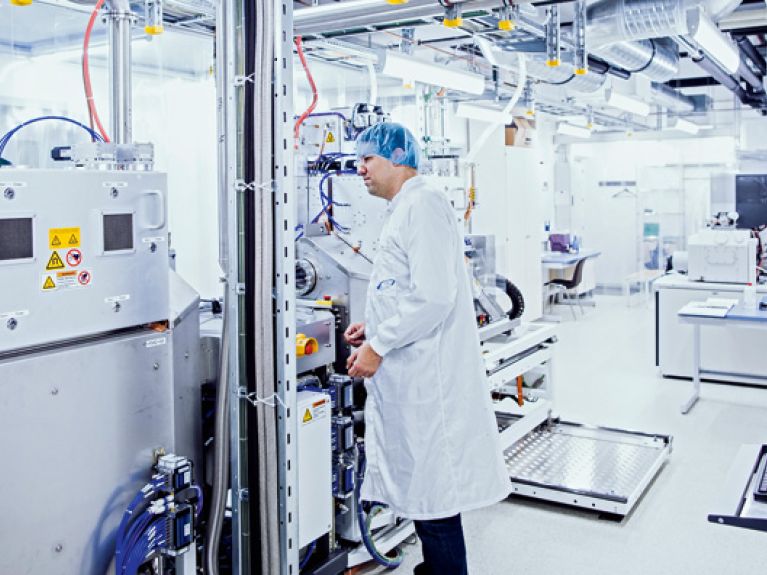Optimally networked
SpinNet’s cutting-edge research: Johannes Gutenberg University in Germany and Stanford University in the US are part of an ambitious partnership.

The heart of spintronics research is hidden between thick glass walls. In order to enter, Frederick Casper has to don a lab coat, a cap and overshoes, since absolutely no dust is allowed inside. “The subjects of our research here are basically invisible,” he says apologetically. “As is often true in physics and chemistry, it all takes place in a chamber and can’t be seen by the naked eye.”
Frederick Casper is a materials chemist and, together with physicists, coordinates a project at Johannes Gutenberg University (JGU) in Mainz which is examining something that is truly hard to see: the intrinsic angular momentum of electrons, or spin. Working with scientists at the internationally renowned Stanford University in the US and Tohoku University in Japan, master’s students and doctoral candidates at JGU have been participating for the last two years in SpinNet, whose goal is to develop energy-efficient information technology based on spintronics. The project network pools knowledge, ensures optimal research conditions and makes it possible for researchers to spend time abroad while studying or completing their PhD. “Science is international,” says Michael Fuchs, General Manager of Materials Science in Mainz (MAINZ), the graduate school at JGU which is part of the Excellence Initiative sponsored by the German Federal Government and which for almost ten years has been helping doctoral candidates launch their careers. Over the years MAINZ has developed an international network – contacts also used to create SpinNet. “It is critical that you go abroad if you want to work in a scientific field later,” says Fuchs. “It’s impossible to learn theoretically the things you experience there.”
The US is particularly attractive for master’s students and doctoral candidates interested in spintronics. This is true not only because Stanford, one of the world’s most renowned and research-intensive universities, is part of the network, but because a number of major spintronics research programs are running there. The IT industry is using them to develop an alternative to existing electronics by creating components that make use of the charge inherent to electrons.
Spintronics additionally uses electrons’ intrinsic angular momentum to process information, thereby saving space and energy. The IBM Almaden Research Center in San Jose, California, a basic research facility, is part of the SpinNet network. “The work being done at the point where basic and applied research meet is very exciting,” says Mathias Kläui, professor at JGU, who worked as a postdoctoral researcher at IBM and helped establish SpinNet. “Partnerships with industry give the students new prospects.”
Yet SpinNet has another advantage: the necessary equipment is extremely expensive, too expensive for any one university alone. “Cooperation” is therefore the order of the day. Shoucheng Zhang, professor at Stanford University and co-initiator of SpinNet, calls it “the only way to work in a future-oriented manner”. Claudia Felser, who helped establish MAINZ and thereby laid the foundation for SpinNet, remembers well how she and Zhang got the idea in 2008 to work together. “New materials as model systems for quantum phenomena became popular because of Shoucheng’s research,” says Felser, now Director of the Max Planck Institute for Chemical Physics of Solids in Dresden. “In that regard, he, the theoretician, and I, the chemist, were a unique combination.”
The German Academic Exchange Service (DAAD) will be sponsoring SpinNet until 2016 with one million euros in funds provided by the German Federal Ministry of Education and Research (BMBF). “From the scientific side, there is no end point. Every doctoral candidate contributes through his or her dissertation,” says SpinNet coordinator Casper. And every article published takes spintronics another step forward.

